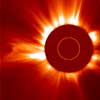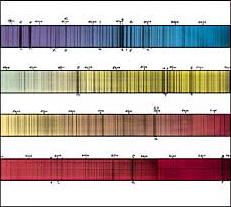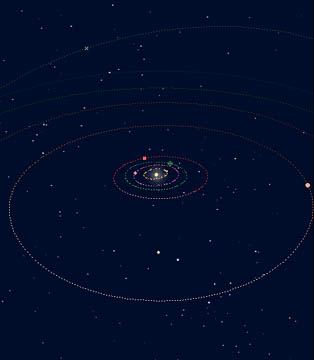|
Main Parts of the Sun
- Core: T = 15 M degrees, totally
ionized; Nuclear reactions take place here: H nuclei (protons) → He
nuclei mostly by the p-p chain,
with a huge release of energy.
- Other interior: Radiation zone (ionized
and transparent to radiation, energy carried outward by high energy
photons) and convection
zone (heat
slowly carried outward by the gas, continuously absorbed
and re-emitted at decreasing temperatures).
- Photosphere: The bubbling "surface" we
see from here, because most of the visible light comes from it; 91% H,
9% He, some O, C, N, ...; Granules (1000 km across, 15-20 min in duration)
are evidence for convection.
- Chromosphere: A thin [only 2000 km!],
cooler and reddish layer.
- Corona: Thick, extremely hot and ionized
layer, T > 1
M degrees!
- How do we know? From observations,
theory, and computer models; one important aspect that provides
a lot of information is the ringing of the Sun, its vibrations
(the subject is also called helioseismology).
|
_238x238.jpg)
|

_214x220.jpg)
_280x270.jpg)


_214x220.jpg)
_280x270.jpg)


_250x338.jpg)
_238x238.jpg)
_214x220.jpg)

![]()